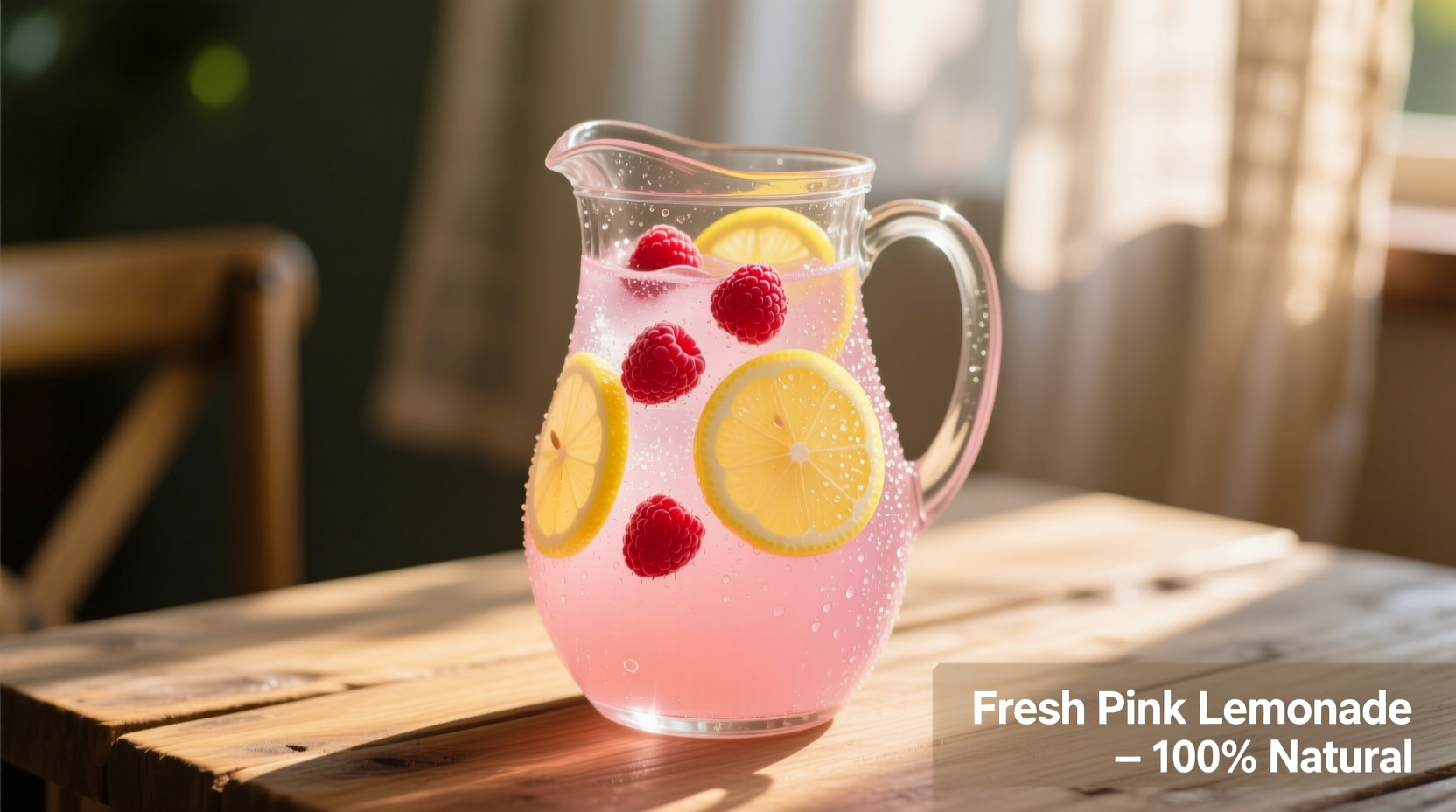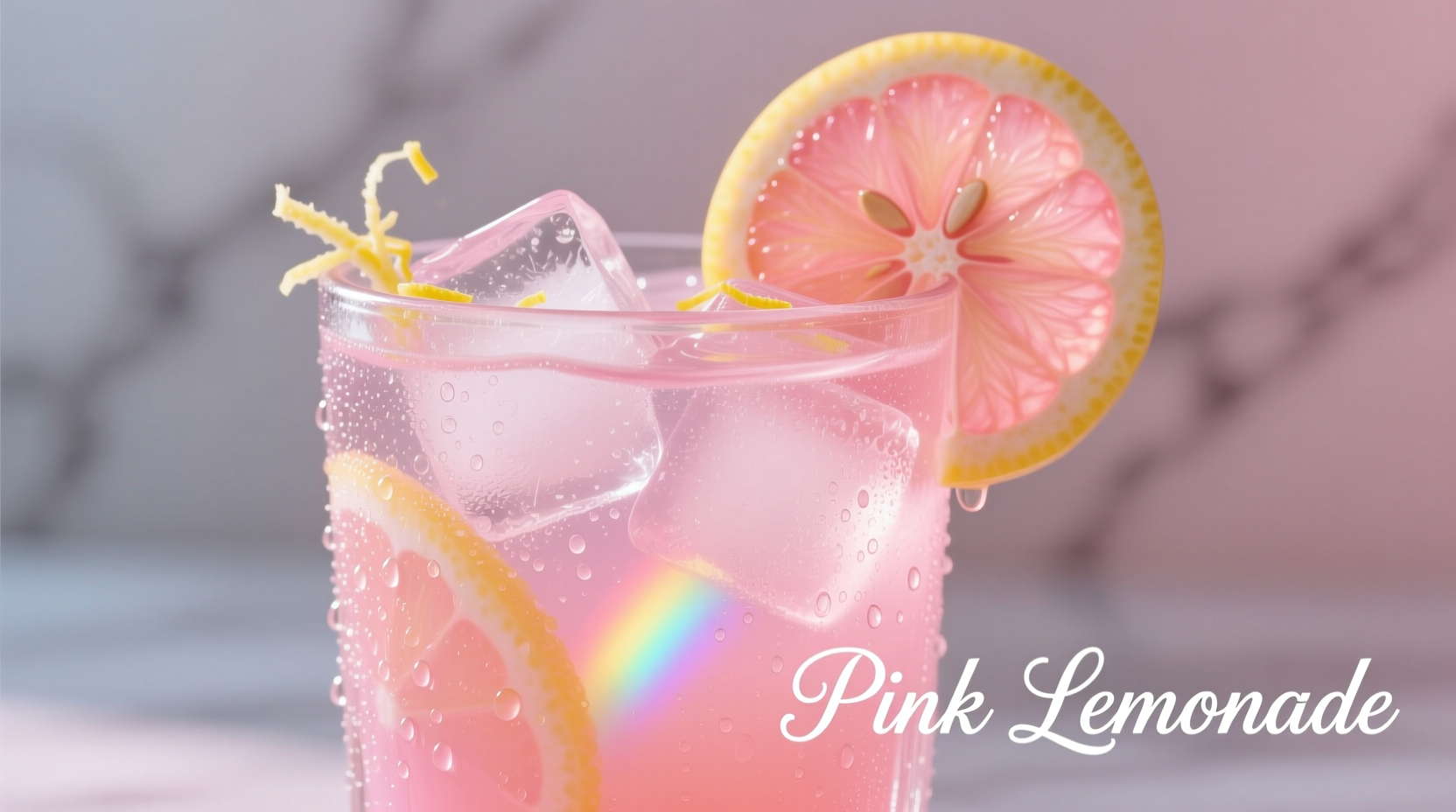When you pour a glass of pink lemonade, you're experiencing a carefully balanced flavor profile that goes beyond standard lemonade. The pink hue isn't just for show—it typically indicates the presence of additional flavor components that create a more complex taste experience. Understanding what gives pink lemonade its characteristic flavor helps you make informed choices whether you're selecting a commercial product or crafting your own at home.
The Flavor Evolution Timeline
Pink lemonade didn't appear on the beverage scene until the late 19th century, with several competing origin stories. The flavor profile has evolved significantly from its mysterious beginnings to today's carefully formulated products.
First documented appearance in American circuses, with flavors varying wildly depending on the vendor's "secret" ingredients—sometimes includingetchup or even胭脂虫 (cochineal insects) for color
Commercial producers began standardizing recipes, typically using cranberry or raspberry juice for both color and flavor enhancement
Artificial flavors and colors became dominant in mass-market products, creating a more consistent but less nuanced flavor profile
Rise of "all-natural" options using real fruit juices and natural colorants, offering more authentic fruit-forward flavors
Natural vs. Artificial Flavor Sources
What actually gives pink lemonade its flavor depends largely on whether you're drinking a commercial product or homemade version. The flavor difference between natural and artificial options can be significant.
| Flavor Source | Typical Ingredients | Flavor Profile | Color Source |
|---|---|---|---|
| Natural Commercial | Cranberry juice concentrate, lemon juice, natural flavors | Bright tartness with subtle berry notes, less sweet | Cranberry or pomegranate juice |
| Artificial Commercial | Lemon juice, high fructose corn syrup, artificial flavors, Red 40 | Overpowering sweetness, one-dimensional "berry" taste | Synthetic dyes (Red 40, Blue 1) |
| Homemade Traditional | Fresh lemon juice, strawberry or raspberry puree, simple syrup | Complex balance of citrus and fresh berry flavors | Real fruit purees |
Decoding Pink Lemonade Labels
When selecting a pink lemonade product, understanding what the label tells you about flavor is crucial. The FDA requires that products labeled as "lemonade" contain lemon juice, but the additional flavor components vary widely.
According to the FDA Food Labeling Guide, terms like "natural flavors" must derive from plant or animal sources, but don't specify exactly which fruits were used. Products listing specific juices like "cranberry juice concentrate" or "strawberry puree" typically offer more authentic flavor profiles than those with vague "natural flavors" listings.
When "artificial flavors" appear on the ingredient list, the pink lemonade likely contains synthetic compounds designed to mimic berry flavors without using actual fruit. These often create a more uniform but less nuanced taste experience.

Creating Authentic Pink Lemonade at Home
Making your own pink lemonade ensures you control both the flavor and ingredients. The professional technique involves balancing three key elements: acidity from lemon juice, sweetness from syrup, and the complementary fruit flavor.
For optimal flavor development, culinary experts recommend using the "maceration" technique with fresh berries. This involves combining crushed berries with sugar and allowing them to sit for 30-60 minutes before adding lemon juice and water. This process extracts maximum flavor while creating natural coloration.
Here's a professional approach to achieving balanced pink lemonade flavor:
- Use a 3:1 ratio of water to simple syrup as your base
- Add freshly squeezed lemon juice (about ¼ cup per quart)
- Incorporate berry elements through either puree (½ cup fresh berries per quart) or infused syrup
- Taste and adjust the sweet-tart balance before chilling
- Allow flavors to meld for at least 2 hours before serving
When Commercial vs. Homemade Makes Sense
Understanding the context for different pink lemonade options helps you make appropriate choices based on your needs. Commercial products serve specific purposes where convenience outweighs flavor complexity, while homemade versions shine in different scenarios.
Commercial pink lemonade works best when:
- You need consistent flavor for large gatherings
- Shelf stability is required (events without refrigeration)
- Cost is a primary consideration for large quantities
Homemade pink lemonade is preferable when:
- Ingredient quality and freshness are priorities
- You want to control sugar content and avoid preservatives
- Creating a signature flavor for special occasions
Common Flavor Misconceptions
Several myths persist about pink lemonade flavor that affect consumer expectations. The most prevalent misconception is that pink lemonade contains less lemon juice than regular lemonade—it typically contains the same citrus base with additional flavor elements.
Another widespread misunderstanding is that all pink lemonade tastes like strawberries. While strawberry is a common flavoring, cranberry actually provides the most traditional pink lemonade flavor profile, offering a more complex tartness that balances well with lemon.
Food science research from the Institute of Food Technologists confirms that the perception of "berry flavor" in pink lemonade is often created through flavor chemistry that combines multiple fruit esters, even when only one fruit is used in the formulation.











 浙公网安备
33010002000092号
浙公网安备
33010002000092号 浙B2-20120091-4
浙B2-20120091-4